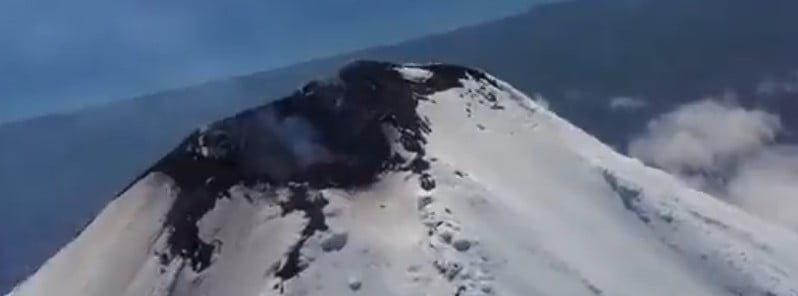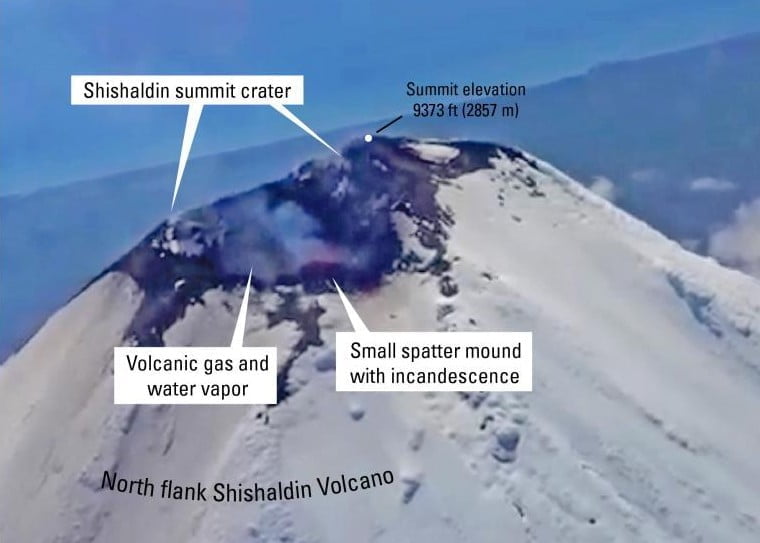Increased activity observed at Shishaldin volcano, Alaska

Volcanologists at the Alaska Volcano Observatory (AVO) are reporting increased activity at Shishaldin volcano. As a result, the Aviation Color Code was raised to Orange.
Satellite data showed strongly elevated surface temperatures at the summit of the volcano on July 11, and seismic tremor was also identified on local geophysical stations. In response, the Aviation Color Code was raised to Yellow and the Alert Level was raised to Watch.
In the following 24 hours, strongly elevated surface temperatures continued to be observed in satellite data and seismic tremor amplitudes increased. Incandescence at the summit was observed in web camera images and sulfur dioxide was detected in satellite data. These observations suggest that lava is likely present within the summit crater of Shishaldin.1
In response to these observations, the Alaska Volcano Observatory raised the Aviation Color Code to Orange and the Alert Level to Watch on July 12.
A U.S. Coast Guard helicopter flew by the volcano on July 12 and captured video of the new eruptive activity. The video shows a new scoria cone growing in the summit crater.
This still is labeled with the eruptive phenomena you can see in the video. In addition to the scoria cone, you can see steam and volcanic gases, and dark ash deposits on the summit.

Geological summary
Shishaldin is the highest and one of the most active volcanoes of the Aleutian Islands. The 2857 m (9 379 feet) high, glacier-covered volcano is the westernmost of three large stratovolcanoes along an E-W line in the eastern half of Unimak Island.
The Aleuts named the volcano Sisquk, meaning “mountain which points the way when I am lost.” A steady steam plume rises from its small summit crater. Constructed atop an older glacially dissected volcano, it is Holocene in age and largely basaltic in composition.
Remnants of an older ancestral volcano are exposed on the west and NE sides at 1 500 -1 800 m (4 920 – 5 900 feet) elevation. There are over two dozen pyroclastic cones on its NW flank, which is blanketed by massive aa lava flows.
Frequent explosive activity, primarily consisting of strombolian ash eruptions from the small summit crater, but sometimes producing lava flows, has been recorded since the 18th century.2
References:
1 ALASKA VOLCANO OBSERVATORY DAILY UPDATE – U.S. Geological Survey Wednesday – July 12, 2023, 21:20 UTC
2 Shishaldin – Geological summary – GVP
Featured image credit: USCG Alaska (stillshot)

Commenting rules and guidelines
We value the thoughts and opinions of our readers and welcome healthy discussions on our website. In order to maintain a respectful and positive community, we ask that all commenters follow these rules.